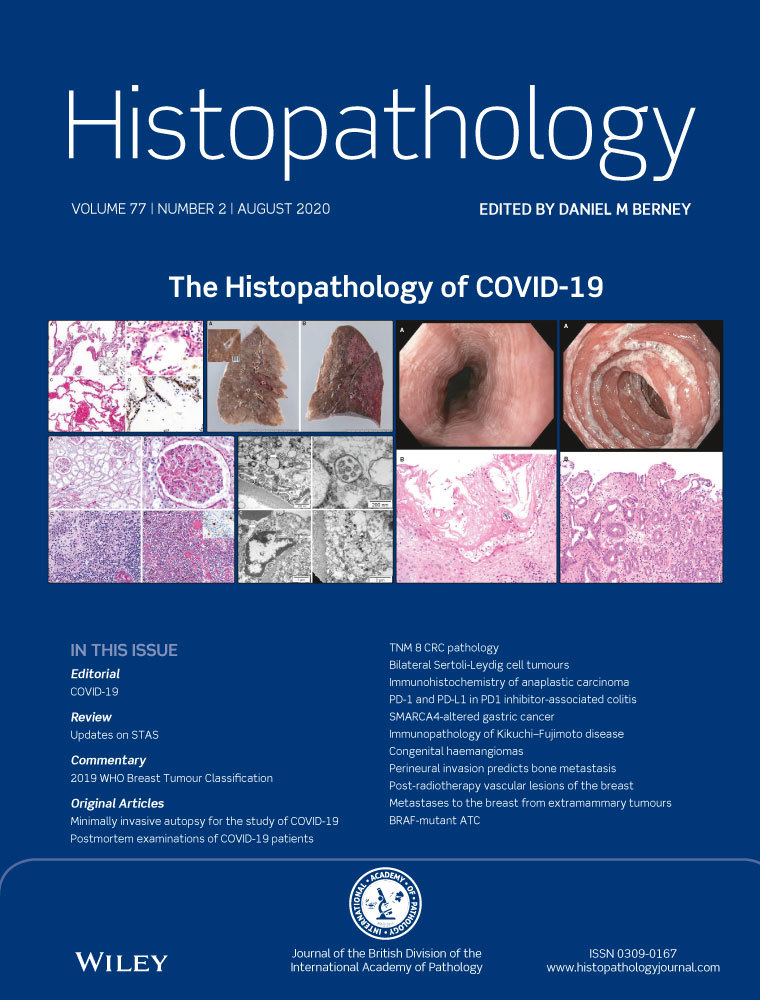Histological features of BRAF V600E-mutant anaplastic thyroid carcinoma
Abstract
Aims
Treatment with a BRAF inhibitor, alone or in combination with a MEK inhibitor, may be considered for BRAF-mutant anaplastic thyroid carcinoma (ATC). The purpose of this study was to characterise the histology of BRAF V600E-mutant ATC.
Methods and results
We identified 28 ATC that were consecutively resected between 2003 and 2019. All tumour slides for each case were evaluated for the presence of a precursor tumour and for ATC morphology (sarcomatoid, pleomorphic giant cell, epithelioid or squamous). BRAF V600E mutation status was determined by BRAF V600E IHC or molecular analysis (OncoPanel NGS). Eighteen (64%) ATC had an associated well-differentiated precursor, including 10 (36%) with associated papillary thyroid carcinoma (PTC) and eight (29%) with associated follicular thyroid carcinoma (FTC) or Hürthle cell carcinoma (HCC). Most ATC (19 cases, 68%) demonstrated a mixed anaplastic morphology. Squamous morphology was present in four cases. Ten (36%) ATC had a BRAF V600E mutation. All ATC that had a PTC precursor had a BRAF V600E mutation (and all ATC with a BRAF V600E mutation had a PTC precursor), whereas no ATC with an FTC or HCC precursor had a BRAF V600E mutation. All four cases of ATC with a squamous morphology had a PTC precursor and a BRAF V600E mutation.
Conclusion
In our cohort, the presence of a PTC precursor predicted the presence of the BRAF V600E mutation, whereas ATC with an FTC or HCC precursor lacked a BRAF V600E mutation. A squamous morphology was associated with the presence of a PTC precursor and a BRAF V600E mutation.
Conflicts of interest
J.H.L. receives research support to the institution from Novartis, Bayer, Takeda, BMS and is on the advisory board of Novartis, Bayer, Genentech. All other authors have no disclosures.




